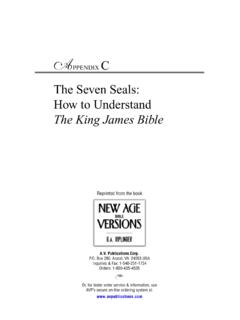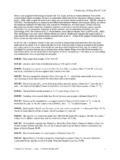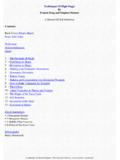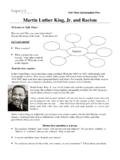Transcription of MIGUEL NAJDORF: KING OF THE KING'S INDIAN …
1 MIGUEL najdorf : king OF THE KING'S INDIAN DEFENSE _____ IM Nikolay Minev The Chess Library Seattle, Washington Copyright 1997 by The Chess Library All rights reserved. No part of this book may be reproduced or transmitted in any form or by any means, electronic or mechanical, including photocopying, recording or by any information storage or retrieval system, without permission in writing from the Publisher: The Chess Library 2100 Third Avenue, Suite 905 Seattle, Washington 98121 MIGUEL najdorf : king of the KING'S INDIAN Defense First Printing: November 1997 Second Printing: January 2007 ISBN+10: 0-9661889-1-8 ISBN+13: 978-0966188912 Other books published by The Chess Library: "Caro-Kann: Fantasy Variation" IM Nikolay Minev 1996, PB, AN, 71 pages (with player index) $ plus $ shipping and handling ISBN+10: 0-9661889-0-X ISBN+13.
2 978-0966188905 CONTENTS _____ Page najdorf and the KING'S INDIAN 5 Table of 17 202 KID Games from najdorf 's 22 Index of najdorf 's 113 5 MIGUEL najdorf and the KING'S INDIAN DEFENSE: Three Magnificent Games najdorf was without exaggeration a master of KING'S INDIAN Defense, one of the "magnificent five" (with Bronstein, Geller, Gligoric and Boleslavsky), who in the decade from 1945 to 1955 practically created the theoretical base of this opening that is still popular today. najdorf s results in the 202 games of this collection (which includes only games with najdorf playing black) is more than excellent. He won 100, lost 29, and drew 73 games, achieving with Black.
3 But probably more important, his games not only give answers to almost all established theoretical lines of KID, but also bring new questions about many rarely used or totally forgotten, but still interesting, continuations. Let the reader be served notice, this collection of his games is a rich field for independent analysis! The following three heavily annotated games are some of his best. All three, but especially the first one annotated by najdorf himself, magnificently illustrate the spirit of the king s INDIAN Defense. These games are also a good starting point for players who want to study the typical tactics and strategy in this opening. 6 _____ [135] KING'S INDIAN Defense E89 Bobotsov M - najdorf M Leipzig (ol) 1960 _____ Notes by GM najdorf from "Szachy" (Poland), 2/1961.
4 Nf6 g6 Bg7 d6 O-O e5 c6 If , then d5 exd5 Ne8 Nc7 and with a good game for Black, or cxd5 dxc4! (not ! with advantage for White, Bronstein-Gligoric, Portoroz 1958) a6 b5 Bb7=, Shocron- najdorf , Mar del Plata 1957. a6 Considered worse is because of Pirc recommends , but according to Euwe, after f5 gxf5 White has better chances. Here is used more often. 6 7 If , then followed by h2-h4-h5 with an attack. Nbd7 Not h4 Nh7 with a better game for Black. !? After the game I learned that all this is the "Bulgarian variation" by Z. Milev, published not long ago in "Shahmatna misal," which naturally was unknown to me. According to analysis there, Black's best is Nh7 ! with a better game for White (not Re8 because of , with the threat and winning a piece).
5 Nc5 If Bxf6 Qxb2! with advantage for Black, and if , then h4 or f5! with better chances for Black. After Nxg5 ( Nd3+) Nxf3+ Black wins, if , then Ncd7 threatening It is obvious that must be prevented and I decided to play for a counterattack. In such sharp positions the most important factor is not the material, but who has the initiative. As we shall see, my decision to sacrifice two pawns was right. 7 8 MKKKKKKKKN I/@+@?07@J I@#@?@#,'J I?4?$?@#@J I$?(!$?@!J I?@?@!@?*J I@?&?@!@!J I!"?2%@?@J I@ -@?6)@-J PLLLLLLLLO ! Nf6 At the cost of two pawns White's attack is stopped, but more important is that his pieces are not harmoniously developed. If , then Nfxe4! Nxe4 Rf4 and Black recaptures the piece with a strong attack. If , then Rxf1+!
6 But not ! Rxf7 + Kxf7 Bd7 Nd3+ Nf4 Here White assessed that, despite the material advantage, he lacks a good plan and offered a draw, which I rejected. It is interesting, that in the further play Black does not play for an attack, but enters into a endgame despite the two pawns less! Bh6! Nxg6 9 One pawn is recaptured. MKKKKKKKKN I/@?@?@7@J I@#@+@?@?J I?@?$?@',J I$?@!$?@'J I?@?@!@?@J I@?&?@?@!J I!"5@?*?@J I@ -@?@)&?J PLLLLLLLLO ! The most difficult move in the whole game. In such positions the ordinary continuation is , taking the open file under control and gaining a tempo. But in this particular situation, Black's Rook is not so active on the f-file, so this is not only worse, but it also forces White to the best reply !. Now Black is threatening b7-b5-b4.
7 A4 Ng3 Nf4 Ngh5 Nxd3! Nf4+ MKKKKKKKKN I?@/@?@7@J I@#@+@?@?J I?@?$?@?,J I@?@!$?@?J I#@?@!(?"J I"?&?@?@?J I?"5@?*?@J I@ -@?@?&?J PLLLLLLLLO ! 10 Now the material is equal, because if Bf5+ Bxb1 Rxc1+ etc. Nf6 + Kh7 d5 Nxd5 Be6 Threatening Bb3+. MKKKKKKKKN I?@/@?@?@J I@#@?@?@7J I?@?@+@?,J I@?@'$?@?J I#@?@?@?"J I"?& -@?&?J I?"5@?*?@J I@?@?@?@?J PLLLLLLLLO ! Two strong Bishops and the passed pawn in the center give Black a decisive advantage. The pawn is "taboo": Bf5 and wins, for example Nxc3 Rd8+, or Bg7 Bxc3 Nxc3. Nxc3 e3 If Rg8! Bf5 Bg7 + Kg8 Bg4+ e2 Threatening ! 11 Bf3 Re8 Rd8 Rxd6+ Bg4 0-1 _____ [136] KING'S INDIAN Defense E90 Cobo E. - najdorf M. Havana 1962 _____ This game is from the last (21st) round, and a very important game for both players.)
8 For najdorf , the victory would mean that he would be the winner of a very strong tournament, ahead of Spassky, Smyslov, Gligoric, Polugaevsky, Pachman, Ivkov, Matanovic etc. For Cobo the victory would mean the title of International Master. Symbols and notes by IM A. Becker. Nf6 d6 Nbd7 e5 g6 Bg7 h6 g5 Nh5 Ndf6 Nxg3 h5! Bh6! b6 Bd7 Qe7 O-O-O c5 No better is Bxc6 because of ! and Bh6 is very strong. Rde8! Against White's eventual break-through f4 and e4-e5. Kb8 Qd6 g4 Qxd7 gxf3 12 The open f-file will be in Black's possession! Natural and good was with approximately equal game. Ng4 Probably now White saw that the planned is in Black's favor after ! Qa4. ! With the idea if Bd4 f5!
9 A critical position. MKKKKKKKKN I?8?@/@?@J I$?@3@?@?J I?$?@?@?0J I@?$!$#@#J I?@!,!@'@J I@%&?@-"?J I!@?@?@!@J I@5@?@1@-J PLLLLLLLLO White should enter into complications after e4 , and if ! e3 ! looks stronger for Black, but even then, White probably holds by fxe4 Cobo obviously overlooked najdorf 's 35th move. Mandatory was e3 with some counter-chances. 13 Qh7+! Nxh1 Rf6 Rf2+ also loses quickly after ! Qa6+ b5 Qa4# 0-1 _____ [199] KING'S INDIAN Defense E99 Taimanov M. - najdorf M. Zurich (ct) 1953 _____ Notes by GM David Bronstein (B), from his book "Mezhdunarodny turnir grosmaisterov Zurich 1953", Second edition, Moscow 1960 (as translated by J. Marfia in the excellent volume "Zurich International Chess Tournament 1953", Dover Publications, Inc.)
10 , 1979); also by GM Gedeon Stahlberg and GM Paul Keres (SK), from their book "Varlds schack turneringen Neuhausen-Zurich 1953", Sveriges Schackforbunds Forlag 1954. (NM) indicates notes added by this author. (B) - ..[T]his was one of the [tournament's] most interesting games, and the recipient of a brilliancy prize. Both of its phases - opening and middlegame - were conducted by najdorf with such a high degree of erudition and mastery that the need of a third phase never arose. Nf6 g6 Bg7 d6 O-O e5 Nc6 (B) - Not too long before this tournament, Taimanov employed 14 this twice in the 20th USSR Championship. In both cases, he scored with one and the same plan: a pawn break on the c-file, followed by an outflanking and turning maneuver around the entire grouping of Black's pieces on the d- through g-files, leaving only the darksquare Bishop to guard his king .






